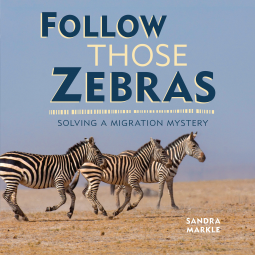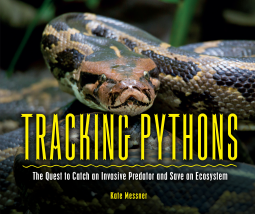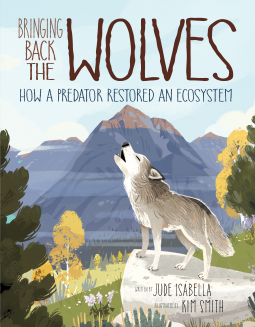Deep, Deep Down: The Secret Underwater Poetry of the Mariana Trench was written by Lydia Lukidis and illustrated by Juan Calle. Deep, deep down, at the very bottom of the ocean, lies a secret world. Through lyrical narration, this spare-text STEM picture book takes readers on a journey to a place very few humans have ever been—the Mariana Trench. The imagined voyage debunks scary myths about this mysterious place with surprising and beautiful truths about life at Earth's deepest point. Deep, Deep Down shows a vibrant world far below, and teaches readers how interconnected our lives are to every place on the planet.
Showing posts with label ecosystem. Show all posts
Showing posts with label ecosystem. Show all posts
Book Review: Deep, Deep Down: The Secret Underwater Poetry of the Mariana Trench by Lydia Lukidis, Juan Calle
Deep, Deep Down is a beautifully illustrated book that captures the mysterious creatures and habitat deep in the ocean. The artwork is realistic, but still carries a touch of cartoonish edging. The words are few, but have a nice cadence and flow well. I also liked the boxes of detailed information of the creatures featured in the book, as well as the markers as to the depth and pictured creatures on just about every page. These pieces of information are great for the interested and curious, and might spark more interest in younger readers, while they do not distract those that are just interested in the artwork and narration. In the same vein, I like the additional information and glossary that are included at the end of the book. I think the only thing that was missing was a list of resources for further investigation of the subject matter. I think because of this the book will stand up well to multiple readings and a wider range of age groups.
Audio Book Review: The Insect Crisis: The Fall of the Tiny Empires That Run the World by Oliver Milman Narrated by Liam Gerrard
The Insect Crisis: The Fall of the Tiny Empires That Run the World was written by Oliver Milman and the audio version was narrated by Liam Gerrard. From ants scurrying under leaf litter to bees able to fly higher than Mount Kilimanjaro, insects are everywhere. Three out of every four of our planet's known animal species are insects. In The Insect Crisis, Oliver Milman dives into the torrent of recent evidence that suggests this kaleidoscopic group of creatures is suffering the greatest existential crisis in its remarkable 400-million-year history. What is causing the collapse of the insect world? And what can be done to stem the loss of the miniature empires that hold aloft life as we know it? Milman explores this hidden emergency, arguing that its consequences could even rival climate change. He joins the scientists tracking the decline of insect populations across the globe, including the mountains of Mexico that host an epic, yet dwindling, migration of monarch butterflies; the verdant countryside of England that has been emptied of insect life; the gargantuan fields of US agriculture that have proved a killing ground for bees; and an offbeat experiment in Denmark that shows there aren't that many bugs splattering into your car windshield these days. These losses not only further tear at the tapestry of life on our degraded planet; they imperil everything we hold dear, from the food on our supermarket shelves to the medicines in our cabinets to the riot of nature that thrills and enlivens us.
The Insect Crisis: The Fall of the Tiny Empires That Run the World opened my eyes to the threats to insects I have never considered and how valuable even some of the least thought about or liked insects can be to the environment. Between climate change, industrial farming, and the ever stronger chemicals we have been using to limit weeds and pests insects are facing challenges they have never had to deal with before. Numbers of a wide variety of insects are declining and while some are latching on to the plight of bees and butterflies, the majority of the decline is ignored, considered a good thing, or simply forgotten because fighting to save the population of dung beetles is less publicity friendly than saving the pandas or whales. I enjoyed getting a look at the science involved in documenting this problem, and I thought the descriptions of the researchers involved were very amusing and interesting. The tone of the book was entertaining, with humor through out the book, but never making light of the seriousness of the problem. I thought that the narrator, Liam Gerrard, did a wonderful job of conveying the import and intent of the book. I also like that the book described some simple things we can do, things that farmers and governments can do, and things we all should do to protect insects and life as we know it. I also like that it was pointed out that even if mankind fails to change, as we have proven we are reluctant to do without financial gain, some insects will still survive and possibly thrive long after we have destroyed every way possible for our species to do the same. They just wont be the insects that we venerate and depend on for pollination, waste clean up, or other vital tasks around the would that we often forget about.
Early Book Review: Follow Those Zebras: Solving a Migration Mystery by Sandra Markle
Follow Those Zebras: Solving a Migration Mystery by Sandra Markle is currently scheduled for release on April 7 2020. Every year in Namibia, about two thousand zebras suddenly disappear from their grazing area along the Chobe River. Months later, the herd returns. Where do they go? And why? Thanks to satellite-tracking collars, scientists were able to solve the mystery, but several questions remain. Award-winning science author Sandra Markle reveals the process scientists used to study the zebras, and she also delves into the science of migration, exploring how animals know where to go, how to get there, and when to leave.
Follow Those Zebras is well written and researched. I liked that the photographs, maps, and small bubbles of additional facts broke up the pages, putting the information in accessible blocks for younger or more distractible readers. I still find it fascinating that no one knew were the herd was going, you would think that many zebra moving year after year would have garnered more attention then people just wondering where they went. With the way people have taken over so much land I would have thought someone would have tracked their movements by now. I loved learning about the methodology of how they managed to track the zebras and what they learned. I also really liked that the scientists did not stop there, having their initial questions answered. Instead they looked further to see the whys behind the migration, and how people and climate change could impact the future of the zebras, and are working to help them survive in a changing environment. I thought that the additional zebra facts, references, resources for further reading, and glossary are important touches as well, and always make my day when they are included.
Early Book Review: Tracking Pythons: The Quest to Catch an Invasive Predator and Save an Ecosystem by Kate Messner
Tracking Pythons: The Quest to Catch an Invasive Predator and Save an Ecosystem by Kate Messner is currently scheduled for release on March 3 2020. Burmese pythons are native to Southeast Asia, so when one showed up dead along the side of a Florida highway in 1979, scientists wondered where it came from. No one knew the snakes had launched a full-scale invasion. Pet pythons that escaped or were released by their owners started breeding in the wild, and these enormous predators began eating every animal in their path. Today a group of scientists at the Conservancy of Southwest Florida is tracking Burmese pythons to find ways to stop their spread. Page Plus links lead to video clips and photos of the scientists working in the field. Delve into the science of pythons and their role as invasive predators.
Tracking Pythons is a well researched and written book that offers readers a look at how delicate the balance in a ecosystem can be, and how something that seems small can cause extreme changes. Whether the first pythons in Florida were escaped or released pets, or stowaways, is less important than the studies and efforts to understand and control their impact on an area that is already facing environmental stress. I liked the conversational tone and the backgrounds stories for some of the scientists that are working on the problem, and the details of the field and lab work that can be involved. I think the combination gives readers a good look at what they might do if their find a career in the field. I really enjoyed getting to know more about the lengths that go into keeping the environment and the creatures in it, as healthy as possible despite the damage being done both intentionally and unintentionally by man. I really like the use of additional digital content for interested readers. So many kids have phones and tablets on hand, and leading them to reputable and interesting resources is a great way to keep their attention and encourage further research. I also liked the concises timeline for the python population, as well as the fact that the book included a glossary and page of resources for further reading. I found the book to be well done and accessible for interested readers.
Early Book Review: Bringing Back the Wolves: How a Predator Restored an Ecosystem by Jude Isabella
Bringing Back the Wolves: How a Predator Restored an Ecosystem by Jude Isabella is a nonfiction book for children that is currently scheduled for release on March 3 2020. An unintended experiment in Yellowstone National Park, in which an ecosystem is devastated and then remarkably rehabilitated, provides crucial lessons about nature's intricate balancing act. In the 1800s, hunters were paid by the American government to eliminate threats to livestock on cattle ranches near Yellowstone National Park. They did such a good job that, by 1926, no gray wolf packs were left in the park. Over the following decades, virtually every other part of the park's ecosystem was affected by the loss of the wolves --- from the animals who were their prey, to the plants that were the food for that prey, to the streams that were sheltered by those plants --- and the landscape was in distress. So, starting in 1995, in an attempt to reverse course, the government reintroduced gray wolves to the park. Over time, animal populations stabilized, waterways were restored and a healthy ecosystem was recreated across the land. It's a striking transformation, and a fascinating tale of life's complicated interdependencies. Jude Isabella's thoroughly researched, expert-reviewed text and Kim Smith's beautiful nature art bring science to life in this captivating story of renewal. Readers will recognize just how complex an ecosystem is and learn about the surprising interconnectedness of its members. Biodiversity, ecosystems, the food chain, habitats, needs of living things and the importance of human stewardship of the environment are all covered through this real-life example, offering direct links to earth and life science curriculums. Food web infographics help reinforce the information. A glossary and index add to the book's usefulness.
Bringing Back the Wolves: How a Predator Restored an Ecosystem is a well researched and written book about the reestablishment of wolves at Yellowstone. I have seen a few documentaries on the subject, since my daughter has been obsessed with wolves for years. I had a general understanding of the subject, but that is not necessary to understand the book. The information is framed in narratives and written so that it is easily accessible and understood without talking down to readers or sounding condescending. The information was well paced, and the accompanying artwork added a great deal to my understanding and will be very useful for visual learners. I learned some information that was new to me, and was reminded of how small changes can have a large effect on the world. This is something that I think readers of all ages could learn and be reminded of on a regular basis. I was glad to see a glossary, resources, and an index in the endpapers. I think this book could be a good addition to public, school, and classroom libraries.
Subscribe to:
Comments (Atom)





